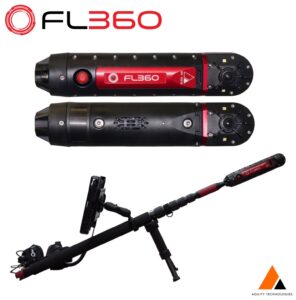LITHIUM-ION BATTERY / EV / MOBILITY DEVICE TRAINING
All Hands Fire offers two comprehensive program that will introduce and educate students on Lithium-Ion battery emergencies. Instructors have real world experience in response, handling and mitigation of Lithium-Ion Battery and related emergencies as members of the FDNY Special Operations Hazmat Response.
Two classes that are offered include Operations-level and Technician-level.
Lithium-Ion Battery Operations Course (4 hours)
- Introductions and facility orientation
- Types of batteries and overview of hazards
- Primary and secondary batteries
- Battery construction, including cells, modules, bricks, and battery management system
- Skill Station: Constructing a battery cell
- Understanding volts and amp hours
- Parallel and series battery modules
- Skill Station: Hands-on battery module construction
- Understanding and calculating watt hours
- Shock hazards for Direct Current (DC) and OSHA hazard levels
- Skill Station: Calculating watt hours
- PPE for battery emergencies including protection from DC energy
- Primary Batteries
- Primary Alkaline Batteries
- Overview and construction
- Primary Lithium Metal Batteries (LMB)
- Overview, recognition, and common uses
- Chemistry
- Response considerations
- Fire suppression considerations (Water vs Class D Agents)
- Class D agent selection
- Button Batteries
- Introduction
- Ingestion hazards
- Skill Station: Button battery toxicity
- Secondary Batteries
- Lead Acid Batteries
- Overview, recognition, and common uses
- Chemistry and construction
- Response considerations
- Lead Acid Batteries
- Secondary Lithium-Ion Batteries
- Lithium-Ion (Li-Ion) Batteries
- Overview, recognition, and common uses
- Construction and chemistry
- Li-Ion electrolytes
- Understanding thermal run-away including causes
- Interrupting thermal runaway
- Air monitoring
- Lithium-ion containment vessels
- LIBIK bags
- DOT approved drums with Class D agent
- Response considerations
- Flammable environments from electrolyte venting
- Size up: Single cell vs multi-module failure
- Overpacking unstable Li-Ion battery cells
- Lithium-Ion Battery Response Considerations
- Response Considerations: Consumer Electronics and Personal Mobility Devices
- Overview, construction, and hazards
- Response considerations
- Response Considerations: Electric Vehicles
- Overview, construction, and hazards
- Vehicle fire case studies
- Response considerations
- Technical information on EV
- Response Considerations: Consumer Electronics and Personal Mobility Devices
- ISO 17840 standard
- Response Considerations: Energy Storage Systems (ESS)
- Overview, construction, and hazards
- Response considerations
- Response Considerations: Energy Storage Systems (ESS)
Note: A detailed class outline can be provided
Lithium-Ion Battery Technician Course (8 hours)
- Definitions
- Understand the lexicon of li-ion batteries
- Understand the terms within electrical systems
- Volt, amps, circuit types etc.
- Chemistry of Li-Ion battery
- Buildings and innerworkings of battery
- Classification of why it is harmful
- Common household items that hold this battery
- Understanding the chemistry of this battery
- Variations in battery types and their impact on harm potential
- Physical manifestation of the chemical reaction that causes the damage to the battery to spread
- Overheating battery
- Causes for increase in temp of batteries
- Mechanical and electrical
- Discussion of possible proper common-sense handling in household items
- Proper measures for the safety of battery usage and storage
- Fire Operations
- History of handling and operations of smoking battery – insipid stages of thermal runaway
- No policies in place set by industry
- Teaching proper protocols, current best practices for safety of storage of battery
- Recommendations for storage of battery
- Understanding the fundamental reasons for the reaction of a battery
- Understanding the risk of the storage of battery
- History of response protocols
- Active fire batteries
- Firefighting procedures
- Best practices for handling a battery on fire
- Understanding the risk for what is being insured
- Understanding the risk assessment under the policy for burning battery
- Understanding the protocol for fire response to this type of fire
- Risk assessment to property damage
- History of handling and operations of smoking battery – insipid stages of thermal runaway
- Hazmat Operations
- Where are we now (break down of current response options with pro and cons)
- Response options for fire department
- Optics for various tactics
- Let it burn scenario
- Fire Department protocol
- Understanding the risk associated with free burn vs suppression
- Understand rapid release of gas and energy during thermal runaway.
- Potential harm for property damage
- Toxins / health risks with battery in thermal runaway
- Where are we now (break down of current response options with pro and cons)
- Demonstrations
Note: A detailed class outline can be provided
Products available from AllHandsFire.com:
Fire Blanket. All Hands Fire is an authorized dealer for the Bridgehill Fire Blanket.
Emergency Plug. EV Shut Off Tool – Emergency Plug
Lead Instructors include Hazmat Specialist Bobby Salvesen and Hazmat Technician Mike Monaco, both from FDNY Hazmat Company 1. These lead instructors, as well as our other hazardous materials instructors, are experienced and well versed in lithium-ion battery, micro-mobility device and EV emergencies.
Contact [email protected] for detailed price quote.









